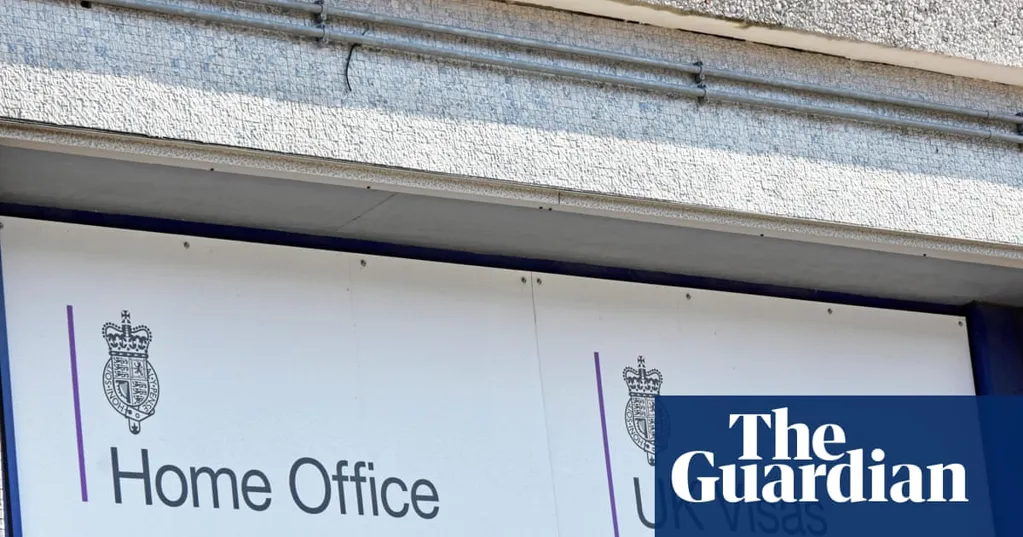Official figures indicate net migration is falling, yet concern among Britons is close to the highest it has been since polling began in 1974.
Rolling news coverage of protests outside asylum hotels, a series of government announcements on asylum seekers, and Reform's party conference meant that immigration was once again the political topic of the summer.
In August almost half of Britons (48%) listed immigration as one of the top issues facing the UK. This year has recorded the highest concerns over immigration - outside of one other period during the 2015 Europe migrant crisis - since polling company Ipsos started asking the question in 1974.
But what do the figures really show - and do all of the claims made about immigrants add up?
Despite public concern about immigration rising in recent months, official figures show that the number of people coming into the country is falling - albeit from a record high peak.
Figures from the Office for National Statistics (ONS) show that net migration has mainly hovered between 200,000 and 300,000 people a year since 2011. However, since Brexit came into effect on New Year's Eve 2020, there has been a large increase in the number of immigrants. Commentators and critics have called this the "Boriswave", as it occurred following the new post-Brexit immigration system introduced by Boris Johnson.
Recent figures show that the wave is subsiding. Net migration fell by half in 2024, and recent rule changes mean it is expected to fall further. This is largely because of a decrease in health and care visas. Fewer people are now escaping the Ukraine war or fleeing the Taliban through the now closed Afghan humanitarian scheme.
Student visas have also declined. Applications were down 1.5% in August (when student visa applications spiked ahead of the academic year) compared with 2024, and down 18% on the same month in 2023.
In comments to the BBC following his conference speech, Reform leader Nigel Farage blamed Johnson for "millions of people being allowed into Britain, most of whom by the way don't even work and are costing us a fortune". However, the available evidence complicates his version of events.
Most people claiming asylum aren't allowed to work. But despite the large media focus on small boats and asylum seekers, these only make up a tiny proportion of the overall number of people coming to the UK - less than 5% of Home Office visas granted and arrivals detected in 2025.
The largest proportion of people coming into the UK is made up of students (about 47%, including dependents). Students aren't expected to work, but do contribute by paying fees towards their degrees, and can't get indefinite leave to remain so either leave the UK or contribute by moving into paid work afterwards.
The second largest group are people on working visas, who make up 20%, with their dependents making up 11%.
Currently, the published data on immigrant earnings is patchy - and isn't helped by ongoing issues with the ONS labour force survey.
Madeleine Sumption, director of the Migration Observatory at the University of Oxford said that while the data on employment was imperfect and rates "vary widely by immigration category", the figures suggested employment rates among recent migrants were "not far off existing residents or long-standing migrants".
A Home Office report managed to link some visa types that were granted between 2019 and 2023, to pay as you earn (PAYE) earnings in the 2023-24 financial year - with most of them recording earnings. As for those without records, it's probable most will have already left the country.
It's not just people on working visas who work. The report also found that almost half of people entering on family visas (48%) had some PAYE earnings (and again that's not including those who are self employed or left the country).
Much of the talk around immigration recently has focused on dependents - family members who are allowed to immigrate alongside the main visa holder. New health and care workers were prevented from bringing their children and other dependents by the Sunak government, as were most students.
The PAYE data suggests many dependents do in fact work - 81% of health and care worker dependents, 45% of skilled worker dependents, and 25% of senior or specialist visa dependents received earnings (once again - these don't take into account the self-employed, or the fact that many will have left the country. Adjusting the figures to account for the primary visa holders that have left raises the estimates further).
Among all the different types of people coming to the UK, newly arrived refugees (around 28% according to some estimates) and those on humanitarian visas are the least likely to be in work.
In terms of overall earnings, the Migration Observatory found that the immigrant earnings grow quickly - the median non-EU immigrant worker in 2024 earned similar or slightly more than the median UK worker.
So will recent migrants - as Farage stated - cost the UK a fortune in the long run? Based on the available data we still can't tell - but given the fact that most people moving to the UK won't be going through the school system, and also have to pay towards their NHS treatment, it's unlikely they would cost more than others.
